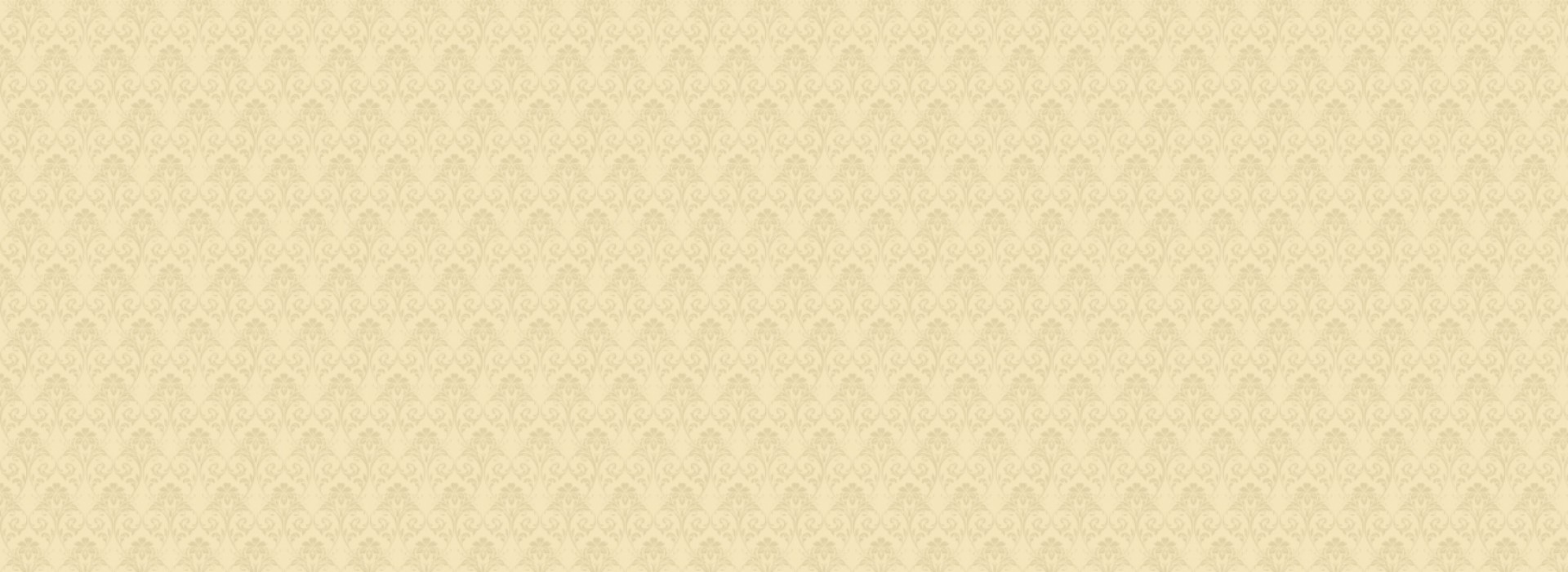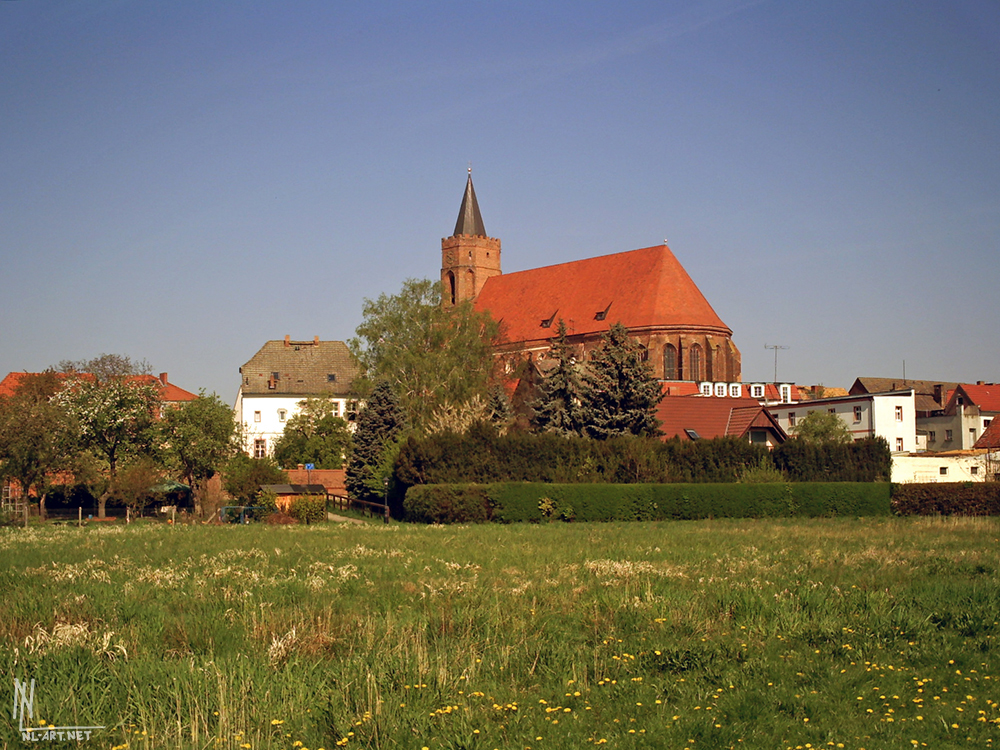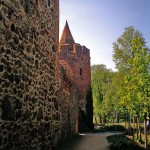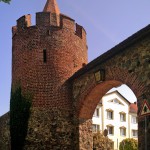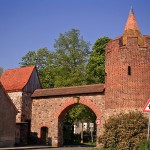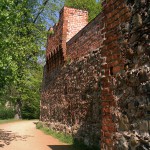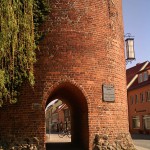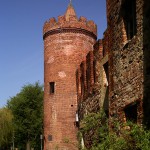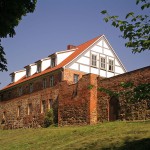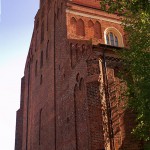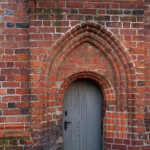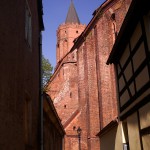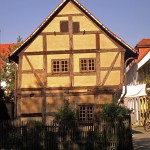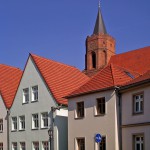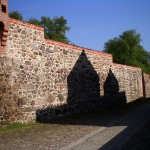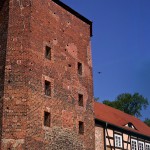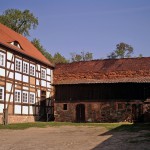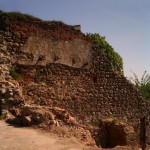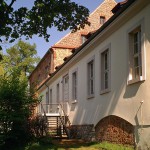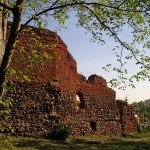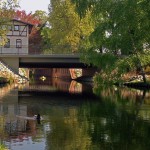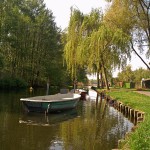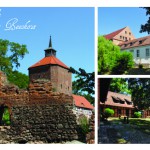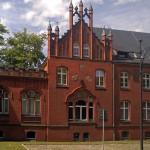I visited Beeskow, a small town where I went to school and took some photos, because it was a beautiful day and I had my camera with me.
Beeskow is the capital of the Oder-Spree District in Brandenburg. The river Spree is close by and one of its arms runs through the town. A lot of the old town centre does still exist and some historic buildings are restored, which makes Beeskow a charming small town worth a visit.
Signs of a Slavic settlement were found on the small island between the arms of River Spree dating back to the year 1200. The official founding of the town happened 50 years later. The first rulers of the town were Konrad, Reinhard von Strele.
The city wall around Beeskow is still mostly complete (broken parts have been restored over the last years) and it surrounds the inner historical part of the town. It belongs to the former fortification of Beeskow. Beeskow has also a lot of tower gates. The Luckauer Tower Gate is with 24 meters the highest tower and therefore called fondly “Dicker Turm” (fat tower).
Another interesting tower is the “Münzturm” (Tower of Coins). The Münzturm got its name in 1321, because Beeskow was allowed to coin their own money, but people think that they only stored the copper and coins inside the tower. It is also mentioned that it was used to be a prison for a short time.
Integrated into the city wall is the former “Mönchsherberge” (Monk Hostel). It was restored a few years back and is quite known because the writer Theodor Fontane spent the night there on his way through the local area.
Beeskow is also known for the big gothic church, the St. Marienkirche, which dominates the cityscape. The church was built from 1380 to 1511 and is towering over the town Beeskow; it can be seen from far away and is a really impressive and old building.
In 1945 the city was under attack by the Red Army and the church got hit and caught fire so that the roof collapsed. They are rebuilding the Marienkirche since 1991. When I went to school they reconstructed the roof structure and we were allowed to walk through the roof beams, which was really impressive and memorable. Close to the church is the oldest house of Beeskow. It was built in 1482 and one can see the age of the house, it is crooked but very charming. During my school days my friends and I spent some of my free time there, looking around the house and the garden and talking to the owner.
Outside the city walls one can find “Burg Beeskow” (Beeskow Castle), which is also one of the signs of the area. Part of the eastern castle wall and side buildings are merely ruins but they are still rebuilding the castle ground. Nowadays it is the centre of education, art and culture in the area. The regional museum is on the castle grounds as well as artist’s workshop. A torture museum is located inside the castle keep. Furthermore, the castle is a so-called water castle because it is surrounded by a river, which was used to convey goods, like salt.
Beeskow ist die Kreisstadt des Landkreises Oder-Spree und liegt nahe der Spree, wobei Spreearme durch Beeskow fließen. Die Altstadt ist noch sehr gut erhalten und es wurde viel restauriert, so dass Beeskow eine reizende Kleinstadt ist, die einen Besuch wert ist.
Anzeichen einer slawischen Siedlung wurden auf der Spreeinsel gefunden, welche aus dem Jahr 1200 stammten. Die offizielle Stadtgründung fand 50 Jahre später Stadt. Die ersten Stadtherren von Beeskow waren Konrad, Reinhard von Strele.
Die Stadtmauer umschließt fast komplett den inneren Stadtkern, einige zerstörte Teile wurden bereits restauriert. Die Stadtmauer gehört zur damaligen Befestigung. Beeskow hat außerdem viele Stadttore. Der Luckauer Torturm ist mit 24 Metern der größte Turm und wird daher liebevoll “Der Dicke” genannt.
Ein weiterer interessanter Turm ist der Münzturm. Er erhielt seinen Namen 1321 als Beeskow das Recht bekam eigene Münzen zu prägen. Es wird jedoch angenommen, dass er nur zur Lagerung des Kupfers und der Münzen diente. Auch wird erwähnt, dass er für eine kurze Zeit als Gefängnis benutzt wurde.
Die Mönchsherberge ist Teil der Stadtmauer und wurde vor einigen Jahren restauriert. Sie ist recht bekannt, weil Theodor Fontane hier eine Nacht verbracht hat, während er in Brandenburg unterwegs war.
Beeskow ist auch für die große gotische St. Marienkurche bekannt, welche die Stadtansicht dominiert. Sie wurde von 1380 bis 1511 erbaut und überragt Beeskow, so dass sie auch aus der Ferne gesehen werden kann.
1945 wurde die Stadt von der Roten Armee angegriffen und die Kirche wurde dabei getroffen, geriet in Brand, so dass unter anderem der Dachstuhl einstürzte. Seit 1991 wird an dem Wiederaufbau gearbeitet. Während meiner Schulzeit wurde der Dachstuhl neu gebaut, so dass wir diesen besichtigen durften. Das war sehr beeindruckend und ist mir in Erinnerung geblieben. Nahe der Kirche findet man auch das älteste Haus von Beeskow. Es ist 1482 erbaut worden und man sieht dem Haus das Alter an. Es ist krumm und schief aber sehr bezaubernd. Während der Freistunden haben wir viel Zeit hier verbracht.
Außerhalb der Stadtmauern befindet sich die Burg Beeskow. Teile der östlichen Mauer und Gebäude sind nur noch Ruinen, aber vieles wurde bereits wieder aufgebaut. Jetzt ist die Burg Mittelpunkt für Bildung, Kunst und Kultur. Das Regionalmuseum befindet sich auf dem Burggelände, sowie Ateliers und das Foltermuseum befindet sich im Bergfried. Die Burg wird auch als Wasserburg bezeichnet, weil sie von Wasser umgeben ist, was den Handel mit Gütern erleichterte, wie zum Beispiel Salz.
most information can be found on the official website: https://www.beeskow.de/
